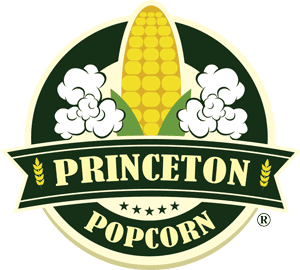Can I Plant the Popcorn Kernels sold by Princeton Popcorn?
Share
YES—You Can!
Absolutely! The popcorn I sell is a seed—and just like any other seed, you can plant it. In fact, that’s exactly how I got started growing popcorn myself.
I was curious about where popcorn came from. Once I learned it was simply the seed of the plant, I decided to give it a try. I picked up the cheapest bag I could find at the grocery store, planted each kernel by hand—and sure enough, it grew.
How to Plant Popcorn at Home
Here’s a quick guide to help you get started:
- Planting Depth & Spacing: Sow each kernel about 1 inch deep in the soil, spacing them roughly 6 inches apart within the row.
- Row Spacing: Space your rows about 30 inches apart.
- Soil Preparation: Choose a location with loose, well-tilled soil that’s free from weeds or grass.
Pro Tip: Avoid planting a single long row. Instead, plant in a grid pattern (multiple rows close together). This dramatically improves pollination. Each kernel on the cob is pollinated by wind-blown pollen that falls from the tassel to the sticky silks. There’s one silk per kernel, so higher pollen exposure means better ears. Honey bees don’t help much here—corn is wind-pollinated!
Here is an example of poor pollination. This example comes from one of my commercial crops. This ear was on an end row and likely upwind. Sorry for the ugly thumb. I got it caught in some machinery!

With proper pollination, you should get good kernel fill. Here is a prime example:

When and How to Care for It
- Timing: May is the ideal time to plant.
- Weed Control: Keep the area weed-free—corn doesn’t like competition.
- Fertilizer: Corn is a heavy feeder, especially for nitrogen. Use a fertilizer with a high first number (that's the nitrogen content). Apply once after planting, and again when the plant has four leaves.
Harvesting & Popping
Let your popcorn plants grow and enjoy watching the process unfold. In about 90 to 120 days, the plants will reach full maturity (that’s a nice way of saying they’ve finished their life cycle). Harvest usually happens around mid to late September.
Harvest Tip: A common sign that the ears are ready is when they start to droop and point toward the ground—though this isn't required, it’s a good indicator.
After picking, dry the ears in a well-ventilated area. It may take a few weeks. The key is to reach the right moisture level:
- Too much moisture = weak, lazy pops
- Too little moisture = won’t pop at all
- Just right = a fun, tasty snack you grew yourself!
Here is a photo of my first crop. I picked the ears, pulled back the husks, and hung them on a sheet of plywood in my garage.

Let me know how it goes if you give it a try—I’d love to hear about your popcorn-growing adventure.
Happy planting,

Farmer Bob

